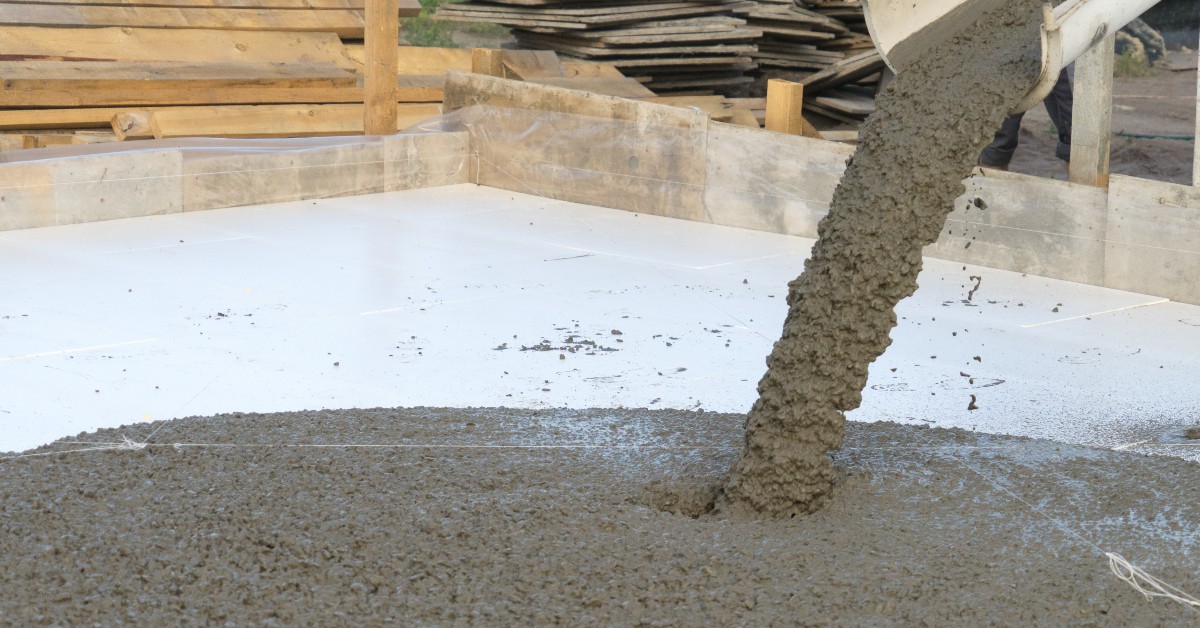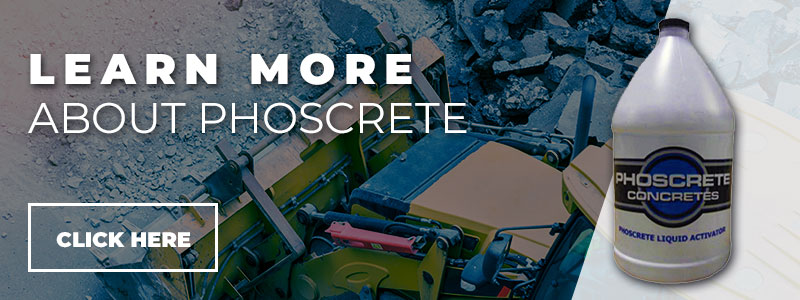
Concrete vs. Cement — What’s the Difference?
Have you ever been walking down a sidewalk and thought to yourself, “Is this concrete I’m walking on, or is it cement? Or is that the same thing?” Maybe you haven’t — but these terms are often used interchangeably and thought of to be the same thing.
In today’s blog, we will be going over the basics of both concrete and cement and some of the different types of each (if you couldn’t tell already, they aren’t the same thing) so that next time you are taking a stroll down the sidewalk, you can think about the intricate mixture you are walking upon.
What is concrete?
Concrete is a mixture of paste and aggregates (sand and rock). The paste is composed of cement and water, and coats the surface of the fine sand and coarse rocks to bind them together and create concrete.
There are several common types of this durable material that are created for different purposes. What makes these types different is the additions (admixtures) to the mix that are used to achieve certain goals. Some of the main concrete admixtures include:
- Accelerating Admixture: Accelerators are added to concrete in order to reduce setting time of the concrete and to accelerate early concrete strength. The length of setting time varies depending on the amount of accelerator used.
- Retarding Admixture: These admixtures are often used in hot weather conditions or difficult jobs in order to delay the setting time. They are also used for special finishing operations, such as exposing aggregate.
- Fly Ash: Fly ash is a byproduct of coal burning plants. And can replace 15–30% of the cement in the mix. This admixture helps to improve workability, reduces the heat generated by concrete, and is easier to finish.
- Air Entraining Admixture: This type of admixture must be used whenever concrete is exposed to freezing, thawing, and de-icing salts. Air entraining agents create microscopic air bubbles in concrete, so when the hardened concrete freezes, the frozen water inside the concrete can expand into these air bubbles instead of damaging the concrete and creating the need for a concrete repair substance such as Fascrete (although it is a pretty awesome product).
- Water-Reducing Admixtures: Water-reducing admixtures reduce the amount of water needed in the concrete mix. The water-to-cement ratio will be lower and the strength will be greater with a water-reducing admixture.
So as you can see, concrete is a simple concept that gains complexity when you are deciding on the proper mixture for your project. But when it comes to concrete repair, Fascrete makes it simple with high-quality, easy-to-use products. Shop our selection of concrete repair products to assist with any and all of your concrete repair projects.
What is cement?
Cement, on the other hand, is generally a very fine powdery substance made up of materials such as calcium, silicon, aluminum, and iron, and may include shells, chalk, marl, shale, clay, blast furnace slag, and slate. These raw ingredients are processed in cement manufacturing plants where they are heated to form a rock-hard substance and then ground into that fine powder to be sold. When mixed with water, a chemical reaction occurs where the cement forms a paste that sets and hardens to bind individual structures of building materials. There are two main kinds of cement that are based on the way it is set and hardened:
- Hydraulic Cement: Hydraulic cement hardens due to the addition of water, and is mainly made up of silicates and oxides such as belite, alite, tricalcium aluminate/celite, and brownmillerite.
- Non-hydraulic Cement: Non-hydraulic cement is hardened by carbonation with the carbon present in the air, so it cannot be used for underwater use. It is produced using the lime cycle.
The cement ingredients are processed in a kiln at a cement plant. Once the cement is created, it can then be used to make concrete for a variety of different projects! And when those projects erode over time or become damaged somehow, there is a whole other mixture called Fascrete that works with any and all concrete repairs — regardless if it is a non-hydraulic accelerating admixture or not. If this is a product you are in the market for, check out our selection today and give us a call with any and all of your concrete repair questions!

